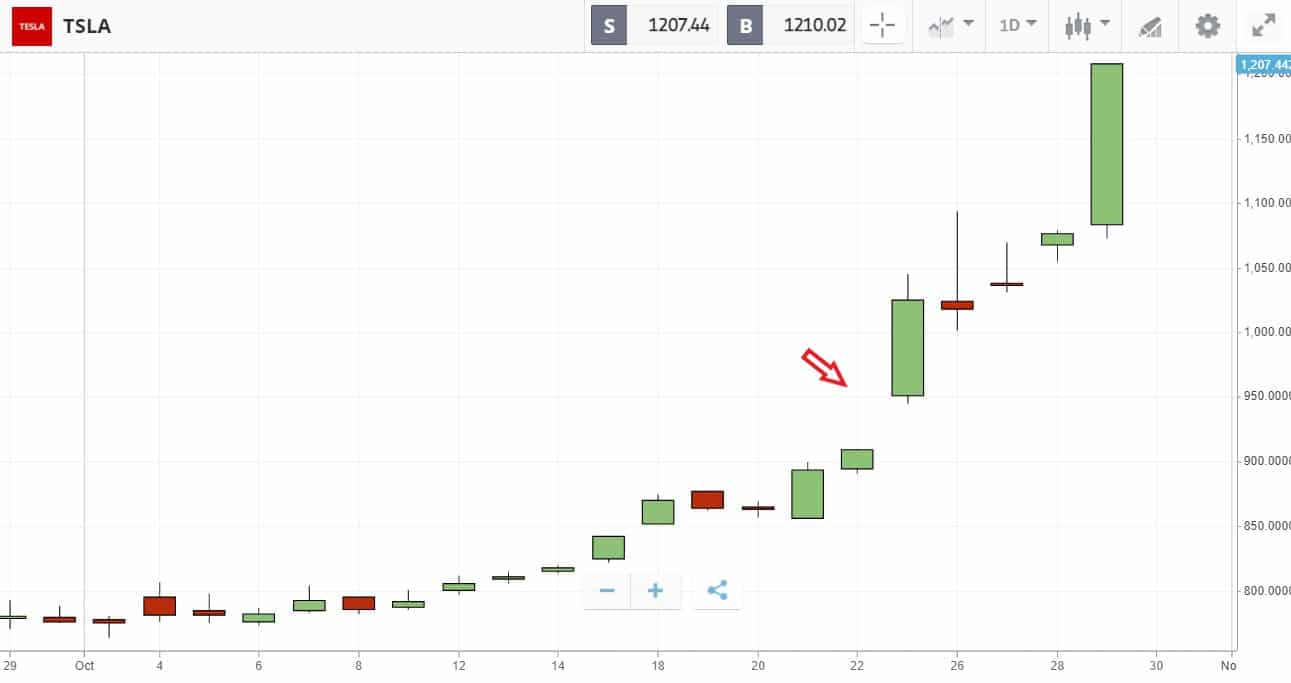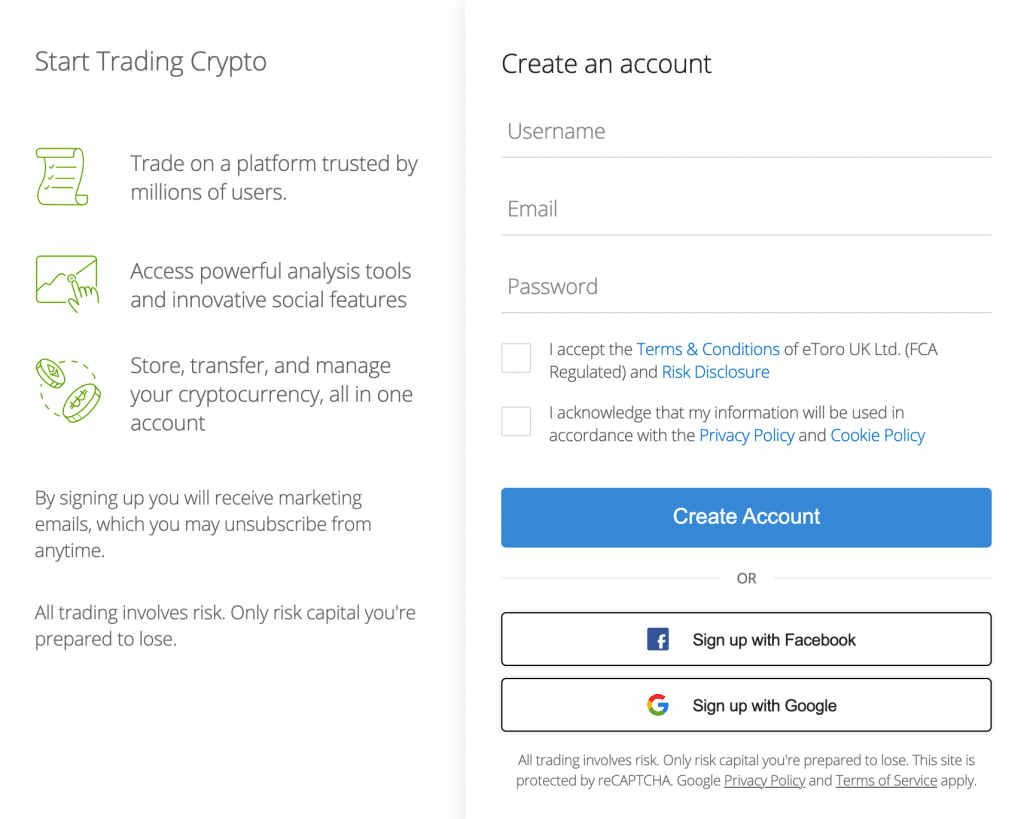Gapping Investing Australia – Gapping Investing Beginner’s Guide 2021
Please note that we are not authorised to provide any investment advice. The content on this page is for information purposes only.
Please note that we are not authorised to provide any investment advice. The content on this page is for information purposes only.
When we dip our toes in the investment pool, there’s one term that mushrooms everywhere: volatility. In volatile markets like high-growth stocks or forex, investors will often see large price jumps – either up or down. When properly understood, these price jumps can be turned into massive profit opportunities.
Gapping investing refers to strategies in which you seek assets whose prices move up and down significantly without much trading in between – this jump is defined as a “gap”. Traders can seek and exploit these gaps using different strategies. The following sections help you understand gapping investing and which brokers allow you to play the gaps.
Table of Contents
First, in order to identify and take advantage of price gaps, you need to open an account with an online broker. Here’s a quick breakdown if you want to start gap investing right now:
When analysing a price chart, we can identify the closing price and the opening price of an asset. In the case of a daily chart, for instance, this means the last price it traded for during one trading day, and the first price it traded for when the market opened the next day.
Gapping refers to a huge difference between the two – in short, the price is much lower or much higher than the previous day’s close with seemingly no trading activity. Gapping occurs in pre-market trading or after-hours trading – i.e. when the market is not open.

One example is Tesla, as illustrated in the chart above. In this case, the gap that formed between the 22nd and the 25th of November happened when the market was closed during the weekend.
In general, there is significant news for such gaps – in this case, it was the announcement that Hertz will order 100,000 vehicles, fuelling investors’ enthusiasm and demand for Tesla shares, which pushed the price up.
These gaps occur outside the trading hours, so the question is how you can opt for gapping investing if the market is closed. In short, pre-market and after-trading hours activity creates the gaps, along with investor sentiment. There are several ways you can both take advantage of these gaps and participate in trading outside the business hours, as discussed below.
Depending on your strategy, there are several online brokers to choose from. These are discussed below, along with the most important features, benefits, and drawbacks.

eToro is one of the most popular online brokers on the market and rightly so – it is heavily regulated and safe, the interface is user-friendly, and you can use its free charting tools to fine-tune your gapping strategy.
Security & Privacy
eToro is registered with ASIC – the Australian Securities and Investments Commission. In other words, it is compliant with all the local regulations, providing its users with peace of mind knowing that they trade in a regulated trading environment.
Fees & Features
It is ideal for both veterans and beginners – for veterans, the broker provides access to derivatives like CFDs which allow you to speculate on price movements and use leverage. If you expect an important news announcement, you can open a long position or a short one to capitalise on the price gap, depending on whether you expect it to go up or down.
For beginners, the online brokerage platform has a smooth interface, easy-to-understand tools, and social-trading features. You can follow master traders, buy a broad range of assets, and exercise your trading skills using the virtual portfolio. It also has numerous risk management tools, such as stop-loss orders that will close your position if a certain price level is met.
eToro does not allow you to trade outside the regular trading hours; however, you can place your orders at any time, and these will be carried out when the market opens. This is an important feature if you live in Australia – trading during NYSE business hours can be impossible due to the time zone difference.
In terms of fees, eToro is also a top choice for many budget-focused investors and traders – buying and selling stocks and other real assets comes with zero commissions. If you purchase CFDs and hold them for several days, you need to cover the overnight fee, which starts at only $0.01 per position. Deposits are free, but withdrawals come with a fee of $5 regardless of the amount.
eToro Fees
| Fee Type | Fee Amount |
| Deposit Fee | $0 |
| Withdrawal Fee | $5 |
| Commission Fee | $0 |
| Inactivity Fee (charged monthly) | $10 |
Pros
Cons
67% of retail investor accounts lose money when trading CFDs with this provider.

AvaTrade is one of the most versatile brokers on the market. Investors and traders with all trading styles, objectives, and skill levels will find the perfect trading platform for their needs after signing up with AvaTrade.
Security & Privacy
Just like our other recommended brokers, AvaTrade is safe and authorised by the Australian Securities Investment Commission (ASIC), but also regulated in other jurisdictions, including Japan and Canada.
Fees & Features
AvaTrade can be the right match for any type of investor or trader. After signing up with the broker, you need to choose a platform of your choice, ranging from AvaOptions (forex and options), AvaSocial (social trading technology with automated trading features), ZuluTrade (third-party social trading platform), to the most popular forex trading platform worldwide, MetaTrader 4. The broker also has a mobile phone app, and none of these platforms have any minimum deposit required, apart from AvaOptions where you need $1,000 to start.
These platforms will help you choose the right tools for your needs, whether you are a beginner interested in social trading, or a veteran who may opt for automated gap investing on MetaTrader 4.
AvaTrade Fees
| Fee Type | Fee Amount |
| Deposit Fee | $0 |
| Withdrawal Fee | $0 |
| Commission Fee | $0 |
| Inactivity Fee | $50 after 3 months, and $100 after 1 year |
Pros
Cons
67% of retail investor accounts lose money when trading CFDs with this provider.

If trading during the pre-market or after-hours sessions is your objective, you may want to sign up with Capital.com. The broker has recently implemented this feature, allowing retail investors to trade derivatives when the markets are closed.
Security & Privacy
Also regulated by ASIC, Capital.com is a safe option for traders and investors alike. Just like eToro, it is not only regulated in Australia, but also in several other jurisdictions, including the United Kingdom and the European Union.
Fees & Features
The online broker provides a learning mode for its novice traders where they can attend webinars, take financial courses, and go through all the investing-related guides necessary to create a successful strategy.
The broker is heavily concentrated on investor education and you can either start risk-free by using the demo account or deposit at least $20 into your real account. This means that investors with any budget can start investing right now. Similarly, with a withdrawal fee of $0, you can book your profits at any time.
Finally, the online broker has variable spreads, depending on the asset you choose. This is a fee built into the cost of the assets you see when you choose to open a trade. The commission is also 0% for real stocks, but CFDs and spread betting are derivatives that come with overnight fees if you choose to keep the positions open for several days.
Capital.com Fees
| Fee Type | Fee Amount |
| Deposit Fee | $0 |
| Withdrawal Fee | $0 |
| Commission Fee | $0 |
| Inactivity Fee | $0 |
Pros
Cons
67% of retail investor accounts lose money when trading CFDs with this provider.
Below, you can check out the broker price comparison that will help you choose the right one for your needs. Overall, eToro provides the best price to value ratio, requiring only a $50 minimum deposit. Also, AvaTrade may be worth your attention if you can avoid the high inactivity fees, while Capital.com is an excellent choice for beginner traders.
| Broker | Commission | Deposit Fee | Withdrawal Fee | Inactivity Fee |
| eToro | 0% | $0 | $5 | $10/month after one year |
| Capital.com | 0% | $0 | $0 | $0 |
| AvaTrade | 0% | $0 | $0 | $50 after 3 months/$100 after 1 year |
As briefly explained at the beginning of this article, gapping refers to large differences between the closing and opening price of a security. There are a few types of gaps that you can find in the markets, so trading strategies also differ. Most traders opt to make transactions when a certain factor (fundamental or technical) indicates a gap the next day. For example, if Apple releases a positive earnings report after today’s trading hours, investors buy the stock anticipating a price gap the next day. Depending on the market and assets chosen, there are different approaches to gapping investing.
Trend traders use price patterns to make trading decisions. For instance, they analyse and pick stocks that are in a rising trend (and buy the asset) or in a downtrend (and short-sell the asset). When in a downtrend or uptrend, the asset price has a support level (lowest price point in the trend) and a resistance level (highest price point). If the stock price is rejected at the resistance level, for instance, it starts decreasing until it typically reaches the support level – if rejected again, the price starts going up, remaining in this trading range.
A breakaway gap is when the price gap goes above the resistance or support area. It’s called a “breakaway” gap because the price breaks the established pattern. When the gap occurs on a large trading volume, it means that investors are strongly convinced that the price will continue in the breakout direction.
Just like other types of gaps, breakaway gaps can happen on any type of price pattern, such as head and shoulders pattern, cup and handle, wedge, and others.
When there is a massive gap between closing and opening prices, it may be a runaway gap. Unlike breakaway gaps, runaway gaps move in the same trend direction as before, while breakaway gaps typically break the resistance or support area, thus breaking the trend range and changing the direction.
As the name suggests, the exhaustion gap indicates that the uptrend is about to end soon. It is quite common on daily charts and it is typically the last attempt to reach a new high – and failing, which means that the demand for the asset is going down, and its price will follow soon.
The exhaustion gap shows that there is a boost in seller numbers – that cannot be overwhelmed by the buyers. Buyers are exhausted, so the price will decrease as a result of falling demand.
Based on different types of gaps, here are some tips on investing in each of them. This can help you identify trading signals after you define your trading strategy.
If you build your strategy on breakaway gaps, you need to become familiar with different chart patterns. Uptrends and downtrends may be the easiest for beginners, but more complex price formations like head and shoulders will help you find better opportunities and make more accurate decisions.
Breakaway gaps typically signal the start of a new price direction – you may find these around earnings announcements for stocks or around the release of an important economic report release for forex, for instance. If the market expects positive results, and the company/economy delivers better results, it’s highly likely to notice a breakaway gap – especially if the price had been in a downtrend previously.
Runaway gaps occur in the trend of a chart pattern – in other words, if the price is going up, the gap will go higher up, and the opposite is valid. This can be fuelled by news announcements before or after the market opens – maybe appointing a new CEO, discussions regarding a new contract that may secure more revenue, and others. Unlike breakaway gaps, runaway gaps signal the continuation of the same pattern and it does not change the direction of the price, so the trigger may not as important as those that fuel breakaway gaps.
If you want to invest in exhaustion gaps, it’s best to opt for a CFD provider like eToro. The platform allows you to short-sell assets via CFDs. In other words, you can identify exhaustion gaps and bet on the falling price – however, keep in mind that there is no foolproof strategy, and investing is always risky, so make sure you use risk management tools to limit your exposure.
There are many trading and investing strategies available. Just like any of them, gapping investing has both benefits and disadvantages. The most important aspect is to clearly define your strategy and stick to it – consistency and patience are crucial in the volatile markets, but so are experience and knowledge.
A well-defined strategy provides you with the foundation you need to make the right decisions. Guesswork or intuition will surely guarantee you a rate of success based on pure luck, but gap trading is rooted in technical or fundamental analysis that will inform your decisions. Gapping is used by many technical traders and is a relatively straightforward trading strategy – once you know what to look for.
A gapping strategy means that you will trade quite frequently – daily or you keep your positions open for a few days only. This means that you will earn more income than if you buy and hold stocks, for instance, since your income will be in form of quarterly or annual dividends in this case.
Gapping investing may not be ideal for everyone. Here are the main risks you should consider before deciding whether this strategy is right for you.
Gaps can be classified only if you recognise the price pattern correctly. Beginners with little knowledge may want to use a demo account with virtual currency first – once you test your strategy and correctly identify patterns and gaps, you can start trading with real money. You should become familiar with candle charts, then start looking into trends and all the different patterns available (i.e., head and shoulders, wedge, flags, pennants, and many more).
Also, if you decide to sign up with eToro which has social trading features, you can copy master traders’ portfolios while you learn the basics of trading, so you can start growing your capital right away while fine-tuning your strategy for regular income.
Let’s assume that you decide to news trade – for instance, you expect Facebook to report better-than-expected earnings, so you buy the stock before the news release. Then, you are correct – there is a significant gap higher than the previous day’s close, and your transaction quickly turns profitable.
However, during the same trading day, the price may go back to the pre-gap level (known as filling the gap), which cancels your earnings. This is known as “fading” and it may have numerous reasons. In this case, for instance, investors perhaps realised that the earnings are better than expected, but noticed the poor cash flow after taking the time to analyse the financial statements, so they decided to sell the stock a few hours later – pushing the price back down to the pre-gap level.
In this case, if you choose to sign up with eToro, you can simply set a take-profit level at a certain level (i.e., automatically sell the asset when you make 5% profit, for instance, or any other level defined by you). eToro also allows you to set a trailing stop-loss order, which means that the order will be closed once the price moves against you (i.e., if it decreases by 5% or any other level you set), and the “trailing” part means that the stop-order moves up with the price increase, but remains fixed if it decreases.
Now that you know the basics of gapping investing, all you need to do is start practising. To help you with this process, we put together this quick step-by-step guide.
Access eToro and click on the sign-up button to open your trading account. You need to insert your personal details and choose a username and password for your account.

As eToro is a regulated broker, you need to complete the KYC process (Know Your Customer). This means that you need to prove your identity by uploading a government-issued ID and proof of address.

To start trading, you need to deposit your capital. eToro requires at least a US$50 minimum deposit. There are numerous payment methods available, including instant ones like PayPal and credit or debit card.
You can start gap trading in eToro’s demo account or use your funds to place trades. You can search eToro’s extensive list of assets, look for market movers, or do your own search to find the right assets, depending on what type of gaps you’re seeking.
All in all, gapping investing is not as complicated as it sounds. In fact, with a bit of practice and a user-friendly broker like eToro, anyone can start making money. Make sure you do your due diligence and stick to your strategy. It’s important to accept the fact that markets participants are often unpredictable, so you need to take possible losses into account, too. Work on your risk management strategy and budgeting and use the demo account to experiment with different gap strategies before you decide which one is for you.
ALSO CHECK:
– Invest in Passive Investing Australia